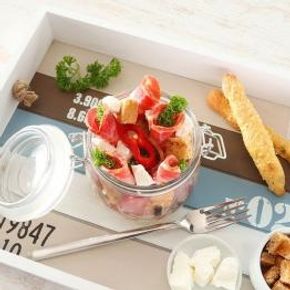Biryani also known as biriyani, biriani, birani or briyani, is a mixed rice dish with its origins among the Muslims of the Indian subcontinent. It is popular throughout the Indian subcontinent as well as among the diaspora from the region. It is also popular in other regions such as Iraqi Kurdistan. It is made with Indian spices, rice, meat (chicken, goat, beef, prawn, or fish), vegetables or eggs.
Biryani
Biryani also known as biriyani, biriani, birani or briyani, is a mixed rice dish with its origins among the Muslims of the Indian subcontinent. It is popular throughout the Indian subcontinent as well as among the diaspora from the region. It is also popular in other regions such as Iraqi Kurdistan. It is made with Indian spices, rice, meat (chicken, goat, beef, prawn, or fish), vegetables or eggs.
Pilaf or pulao, as it is known in the Indian subcontinent, is another mixed rice dish popular in South Asian and Middle Eastern cuisine. Opinions differ on the differences between pulao and biryani, and whether there is a difference between the two at all.
According to Delhi-based historian Sohail Nakhvi, pulao tends to be (comparatively) plainer than the biryani and consists of meat (or vegetables) cooked with rice. Biryani on the other hand contains more gravy (due to the use of yakhni in it), is often cooked for longer (hence yielding more tender meat or vegetables) and with additional condiments.Pratibha Karan states that while the terms are often applied arbitrarily, the main distinction is that a biryani comprises two layers of rice with a layer of meat (or vegetables) in the middle; the pulao is not layered.

Kacchi biryani
In a kacchi biryani, raw marinated meat is layered with raw rice before being cooked together. It is also known as kacchi yeqni. It is cooked typically with chicken or goat meat but rarely with fish or prawns. The dish is cooked layered with the meat and the dahi-based marinade at the bottom of the cooking pot and the layer of rice (usually basmati rice or chinigura rice) placed over it. Potatoes are often added before adding the rice layer. The pot is usually sealed (typically with wheat dough) to allow cooking in its own steam and not opened until it is ready to serve.

Tehari
Tehari, tehri or tehari are variants on the name given to the vegetarian version of biryani. It was developed for the Hindu bookkeepers of the Muslim Nawabs. It is prepared by adding the potatoes to the rice as opposed to the case of traditional biryani, where the rice is added to the meat. In Kashmir, tehari is sold as street food. Tehari became more popular during World War II, when meat prices increased substantially and potatoes became the popular substitute in biryani.

Beef biryani
Beef biryani, as the name implies, uses beef as meat. In Hyderabad, it is famous as Kalyani biryani, in which beef (buffalo meat) is used. This meal was started after the Kalyani Nawabs of Bidar came to Hyderabad sometime in the 18th century. The Kalyani biryani is made with small cubes of beef, regular spices, onions and lots of tomatoes. It has a distinct tomato, jeera and dhania flavour. In Kerala, beef biryani is very famous.

Delhi biryani
The Delhi version of the biryani developed with a unique local flavour as the Mughal kings shifted their political capital to the North Indian city of Delhi. Until the 1950s, most people cooked biryani in their house and rarely ate out. Hence, restaurants primarily catered to travellers and merchants. Any region that saw more of these two classes of people nurtured more restaurants, and thus their own versions of biryani. As per Nakhwi, this is the reason most shops.
The city of Dhaka in Bangladesh is known for selling "Chevon Biryani" (a dish made with highly seasoned rice and goat meat). The recipe includes highly seasoned rice, goat meat, mustard oil, garlic, onion, black pepper, saffron, clove, cardamom, cinnamon, salt, lemon, dahi, peanuts, cream, raisins and a small amount of cheese (either from cows or buffalo). Hajir biryani is a favourite among Bangladeshis living abroad. The recipe was handed over by the founder of the restaurant to his next generation. Haji Mohammad Shahed claimed, "I have never changed anything, not even the amount of salt".

